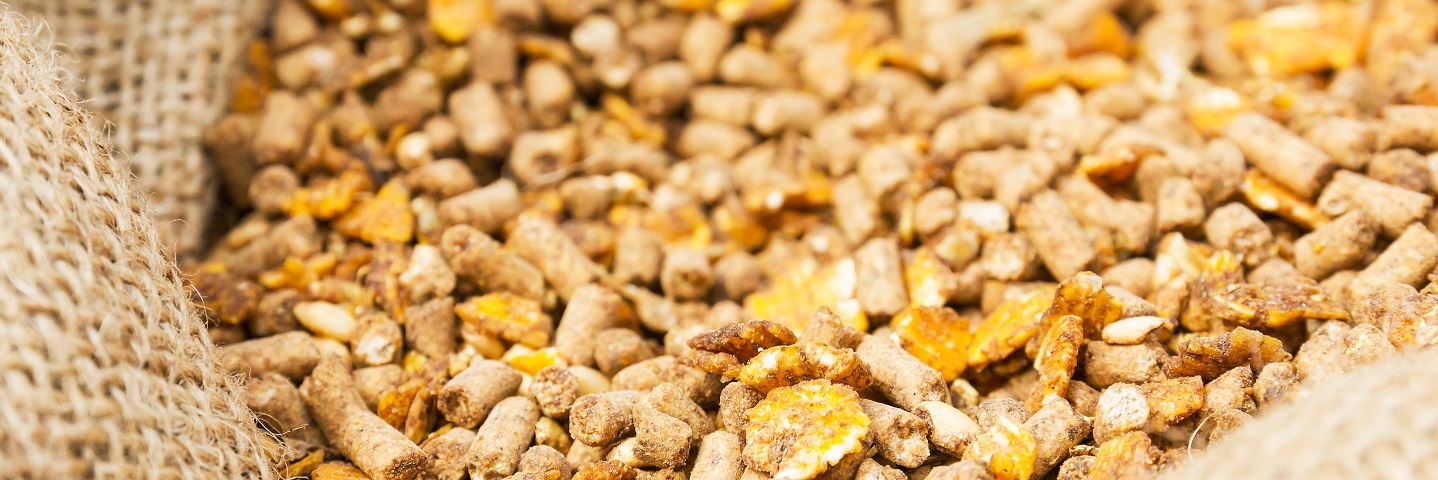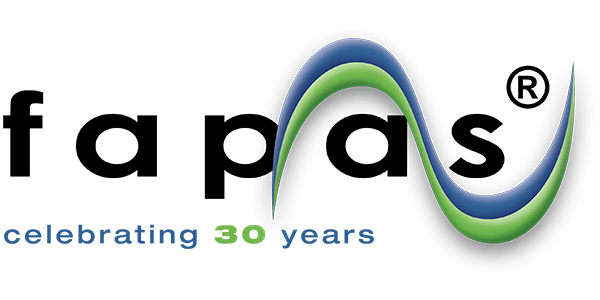
Visit our other sites
-
Fapas - Proficiency Testing
Globally recognised provider of proficiency tests, running over 400 tests annually across an extensive range of matrices and analytes
-
Great Crested Newts Testing
A single sample taken by an ecologist at any time during the newt breeding season can determine their presence or absence, saving you time and money
- Fera has carried out many research projects and surveillance exercises for the UK Food Standards Agency, The EU, and commercial customers by inductively coupled plasma mass spectrometry (ICP-MS).
- Contact Us


Contaminants such as heavy metals are substances that have not been intentionally added to food. These substances may be present in food as a result of the various stages of its production, packaging, transport or holding. They also might result from environmental contamination. Since contamination generally has a negative impact on the quality of food and may imply a risk to human health, European legislation lays down maximum allowed limits in foodstuffs. EU regulations cover the following heavy metals: cadmium, lead, mercury and inorganic arsenic and inorganic tin.
EURL-MN Heavy Metals and Nitrogenous Compounds in Food and Feed
The European Union Reference Laboratory for Heavy Metals and Nitrogenous Compounds in Feed and Food (EURL-MN) was created to implement Regulation (EC) No 882/2004 on official controls performed to ensure the verification of compliance with the feed and food law, animal health and animal welfare rules. Hosted initially by the Joint Research Centre (JRC) based in Geel, Belgium. In January 2018 the JRC stepped down as the EURL for heavy metals and nitrogenous compounds. This role is now hosted by the National Food Institute at the Technical University of Denmark (DTU) Copenhagen, who will continue to work together with appointed National Reference Laboratories (NRLs) of the EU Member States.
The three types of matrices covered by the EURL-MN are: wild caught fish, food of plant origin (and animal feed).
EU-RL Interlaboratory comparisons
Interlaboratory comparisons are the means by which the EURL can monitor, develop and document the analytical performance of the NRLs and Official Control Laboratories (OCLs) as described in EU 2017/625 and EU 2004/882. The first two Proficiency test rounds from the new EURL-MN , food materials and an animal feed, should be available in the last quarter of 2018. The Initial two rounds will be for NRLs only, but future rounds will also be made available to OCLs.
Official methods for the determination of heavy metals and Nitrogen Compounds in feed and food
European legislation
The Contaminants in Food (England) Regulations 2013 make enforcement measures provision for European Commission Regulation (EC) No 1881/2006 and Regulation (EC) No 1881/2006. Setting maximum levels for certain contaminants in foodstuffs and Regulation (EC) No 333/2007 prescribes the methods to be used for sampling and analysis for enforcement purposes. There are similar Regulations for Scotland, Wales and Northern Ireland.
Copies of the EU Regulations, and those of England, Scotland, Northern Ireland and Wales are available from the Food Standards Agency
Commission Regulation (EU) 2015/1006, applicable from 1 January 2016 onwards, amends Regulation (EC) No 1881/2006 setting maximum levels of inorganic arsenic in rice and rice products.
Regulation (EC) No 333/2007: Laying down the sampling methods and the methods of analysis for the official control of the levels of lead, cadmium, mercury, inorganic tin in foodstuffs.
Regulation (EC) No 629/2008: Amending Regulation (EC) No. 1881/2006 setting maximum levels for certain contaminants in foodstuffs.
Regulation (EU) 1333/2008 on food additives
Council Directive 95/2/EC on food additives other than colours and sweeteners
The Feeding Stuffs (England) Regulations 2005
Commission Regulation (EC) No 152/2009 and its’ amendments laying down methods of sampling and analysis for the official control of feed.

Lead
Over the past decades, the lead level in food has decreased significantly owing to source related efforts to reduce the emission of lead, and improvements in quality assurance of chemical analysis. Lead is present at low concentrations in most foods. Offal and molluscs may contain higher levels. Contamination of food during processing or food production in contaminated areas are the main reasons for enhanced lead intake via foodstuffs.
Absorption of ingested lead may constitute a serious risk to public health. Some chronic effects of lead poisoning are colic, constipation and anaemia. It may also induce increased blood pressure and cardiovascular disease in adults. Foetal neuro-developmental effects and reduced learning capacity in children are among the most serious effects.
Maximum levels in certain foods have been established by Commission Regulation (EC) No 1881/2006, and Directive 2001/22/EC establishing maximum levels of heavy metals such as lead, mercury and cadmium in different foods.
Provisions for methods of sampling and analysis for the official control of lead in foodstuffs are laid down in Commission Regulation (EC) No 333/2007.
Cadmium
Cadmium may be present in high concentrations in shellfish and in kidneys, particularly from older animals. Certain wild mushrooms may also contain high levels. Cadmium accumulates primarily in the kidneys and may induce kidney dysfunction, skeletal changes and reproductive deficiencies. In 1993 International Agency for Research on Cancer (IARC) classified cadmium and cadmium compounds in Group I (Human Carcinogens); based on evidence from human studies, mainly those on lung cancer associated with cadmium inhalation in the work place, and from animal studies. The IARC classification is qualitative only.
Maximum levels in certain foods have been established by Commission Regulation (EC) No 1881/2006, which replaces Commission Regulation 466/2001/EC of 8 March 2001 setting maximum levels for certain contaminants in food.
Provisions for methods of sampling and analysis for the official control of cadmium in foodstuffs are laid down in Commission Regulation (EC) No 333/2007.
Mercury
Mercury is a toxic element found mostly in fish and fishery products. Methylmercury, the main form in which mercury is present in seafood, is the most toxic among mercury species. The methylmercury content in fish and shellfish varies, but it is generally assumed that over 90% is in the form of methylmercury. It may induce alterations in the normal development of the brain of infants and may, at higher levels, induce neurological changes in adults. Children exposed to methylmercury prior to birth may experience negative effects on their mental development. Therefore, the levels of mercury and methylmercury in food should be as low as reasonably achievable, (taking into account that for physiological reasons certain fish species concentrate mercury more easily in their tissues than others).
Maximum levels in certain foods have been established by Commission Regulation (EC) No 1881/2006, which replaces Commission Regulation 466/2001/EC of 8 March 2001 setting maximum levels for certain contaminants in food.
Provisions for methods of sampling and analysis for the official control of mercury in foodstuffs are laid down in Commission Regulation (EC) No 333/2007.
Mercury in food EFSA updates advice on risks for public health. (News Story: 20 December 2012).
EFSA provides a risk assessment on mercury in fish: precautionary advice given to vulnerable groups.

Tin (inorganic)
Tin is used principally in the production of coatings used in the food industry. Food, particularly canned food, therefore represents the major route of human exposure to tin. For the general population, drinking-water is not a significant source of tin, and levels in drinking-water greater than 1-2mg/litre are exceptional. However, there is increasing use of tin in solder, which may be used in domestic plumbing, and tin has been proposed for use as a corrosion inhibitor. Tin and inorganic tin compounds are poorly absorbed from the gastrointestinal tract, do not accumulate in tissues and are rapidly excreted, primarily in the faeces.
The main adverse effect on humans of excessive levels of tin in canned beverages (above 150 mg/kg) or other canned foods (above 250 m/kg) has been acute gastric irritation. There is no evidence of adverse effects in humans associated with chronic exposure to tin.
Maximum levels in certain foods have been established by Commission Regulation (EC) No 1881/2006, which replaces Commission Regulation 466/2001/EC of 8 March 2001 setting maximum levels for certain contaminants in food.
Provisions for methods of sampling and analysis for the official control of inorganic tin in foodstuffs are laid down in in Commission Regulation (EC) No 333/2007.
Arsenic
Arsenic is present in seafood at high concentration levels, presumably mainly as organically bound arsenic species. The methylated forms of the element (e.g. dimethylarsinate) have a low level of toxicity, and the principal arsenic species found in fish and crustaceans, arsenobetaine, is considered virtually non-toxic. In shellfish, molluscs and seaweed dimethylarsinyl-riboside derivatives, known as arsenosugars, are the dominating species. The toxicity of these species is not known in detail but appears to be reasonably low.
Inorganic arsenic, present as As (III) and As (V), found in food are the most toxic form.
Data has shown that inorganic arsenic causes cancer of the lung and urinary bladder in addition to skin lesions. The Scientific Panel on Contaminants in the Food Chain (CONTAM Panel) of the European Food Safety Authority (EFSA) identified a benchmark dose lower confidence limit (BMDL01) of between 0.3 and 8.0 μg/kg body weight. per day for cancers of the lung, skin and bladder, as well as skin lesions. Estimates indicated that dietary exposures to inorganic arsenic for average and high-level consumers in Europe fell within this range. Rice is one dietary source of inorganic arsenic it is also an important ingredient in a broad variety of foods for infants and young children. Research has identified high consumers of rice in Europe, such as certain ethnic groups, and children under three years of age as the most exposed to inorganic arsenic through diet. Maximum levels of inorganic arsenic present in some rice-based commodities have been added into European law. Additionally, dietary exposure to inorganic arsenic for children under three years old, including from rice-based foods, is in general estimated to be about 2 to 3 times that of adults. As a result, the maximum permissible levels in rice destined for production of food for infants and young children has been set appropriately low.
Additional maximum levels for inorganic arsenic in certain foods have been established by the Commission Regulation (EU) No 2015/1006 (amending Commission Regulation (EU) No 2015/1006 Regulation (EC) No 2006/1881, applicable from 1 January 2016 onwards).
The General Food Law Regulation (EC) 178/2002 is EC legislation on general food safety and applies to arsenic in food. Queries can be directed to Tracey Smith or Mark Willis are FSA contacts for environmental contaminants regarding metals and trace elements.
Other Heavy Metals
No regulatory limits are set for other heavy metals, other than in natural mineral waters, under EC Regulation 315/93, any "food containing a contaminant in an amount which is unacceptable from the public health viewpoint and in particular at a toxicological level shall not be placed on the market", so indirectly, toxic levels of any heavy metal are controlled by this regulation.
EURL-MN Heavy Metals and Nitrogenous Compounds
Regulation (EC) No. 776/2006 nominates the National Food Institute at the Technical University of Denmark (DTU) Copenhagen as the European Union Reference Laboratory (EU-RL) for Heavy Metals and Nitrogenous Compounds (EURL-MN) in Feed and Food

Food Standards Agency (FSA)
FSA advice on Regulation and Legislation
Directorate General Health and Consumers
DG Health and Consumers ensures that food and consumer goods sold in the EU are safe, that the EU's internal market works for the benefit of consumers and that Europe helps protect and improve its citizens' health. Work is in collaboration with other EU Institutions, national governments and agencies, consumer organisations, health interest groups, business groups, scientists, researchers and experts.
Learn More
To speak with us about any regulation or compliance requirement, please contact us below, or phone our experts on:
+44 (0)300 100 0323

Copyright © 2025 Fera Science Limited (“Fera”). All rights reserved.
For further information about how Fera uses any personal data collected from you, please see our Privacy Notice at www.fera.co.uk/privacy-policy.


